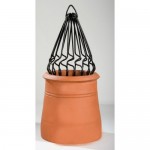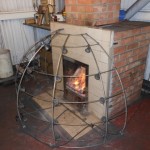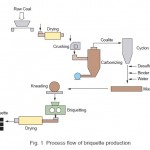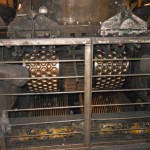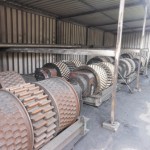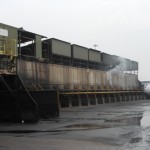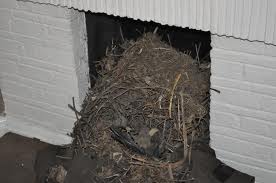Introduction
This post covers the issue of birds down your chimney. Over the last week I have had a number of call outs involving birds that have found their way down chimneys in the Cambridge area. This is quite common in late spring to early summer. Chicks are fledging and finding their way in the world. The only thing that the incidents below had in common was the type or lack of a proper chimney cowl or bird guard.
Cambridge
Firstly I was called to a property which had a fly infestation in the lounge. The old fire place had been removed as it was no longer going to be used. A board covered the old flue opening to prevent hot air escaping. Ventilation holes had been made to avoid damp. However, a bird had the misfortune to fall down the chimney pot and had died on the board. The flies found it, as they do, and nature took its course. The escaping flies were exiting the chimney via the ventilation holes. I removed the board, removed the dead bird, swept the chimney. The chimney was then capped off with a proper cap and replaced the board.
Histon
Two others involved stoves. One had this type of cowl which is really not suitable for a functioning appliance. The gaps between the bars are big enough to stop large, adult birds. However, not young fledglings the size of starlings and sparrows. On this occasion a bird had fallen into the chimney and was trapped in the stove. The other chimney pot was covered by a DIY chicken wire affair. It had rotted through and was worse than useless at keeping birds out. Both of these had happy endings as I was able to catch the birds in the stove and release them. One was a Starling and the other was a Jackdaw chick. Again, the answer was to fit a proper British Standard compliant bird guard with a rain cap.
Fenstanton
Lastly a pigeon had fallen into a very old, large flue and was sitting on a ledge approximately 2-3 metres up. There was no chance of getting hold of it and it was certainly not coming down any further. In the end I had to get my biggest brush and slowly push it up the chimney. Unbelievably the pigeon stood on the brush as I slowly pushed it up the flue. I asked the customer to stand in the garden and let me know when it was out. They rushed in to say that the pigeon had exited the chimney, followed by a huge green brush, and flown off none the worse for its sojourn in their chimney. Again, all that was needed was the correct chimney cowl to be fitted.
What to do if you get a birds down your chimney.
What to do if you find yourself with birds down your chimney. If it is in the room already then close the door behind you and open the biggest window. Draw closed all of the curtains except the one in front of the open window. Leave the room and the bird will fly out on its own. Trying to shoo it out will just cause it to panic and fly around even more. If the bird is the firebox of the stove then turn out the lights and do as above with the windows and curtains. Then drape a sheet over the stove and gently open the door. Reach in and try to catch the bird, then cover it with the sheet. Take it to the open window and release it. If it escapes in this process then hopefully it will bolt for the open window.
Finally consider fitting a proper British Standard compliant bird guard that is suitable for your appliance. Remember gas and solid fuel/oil have a different specification of bird guard. These guards will stop the problem of birds down your chimney. If you live in the Cambridge area or Cambridgeshire then Sweepover Chimney Sweep can fit your bird guard or cowl for you.
